Abstract
The in vitro stimulation response of human lymphocytes to Mycoplasma fermentans was examined. M. fermentans stimulated DNA synthesis in blood lymphocytes from all of 20 healthy subjects examined. Only one of these subjects had complement-fixing antibodies to M. fermentans. Lymphocytes from 21 of 22 adenoids and from 1 spleen were also stimulated to DNA synthesis by M. fermentans. The organism induced DNA synthesis in both B and T lymphocytes from adenoids and spleen and preferentially in T lymphocytes from blood. M. fermentans was shown to activate adenoid lymphocytes to non-amtogem-specific antibody secretion demonstrable by a hemolytic plaque assay. It is concluded that M. fermentans can have a mitogenic effect on both B and T lymphocytes.
Full text
PDF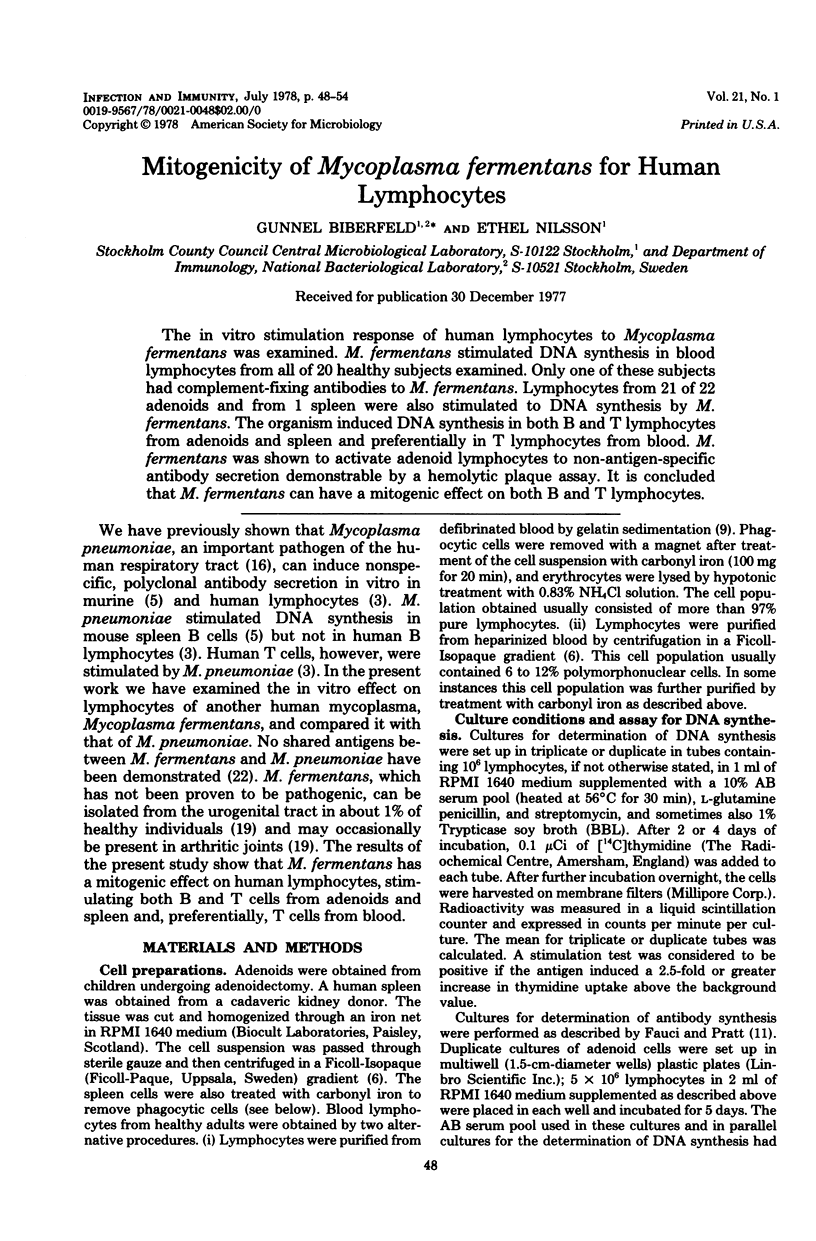
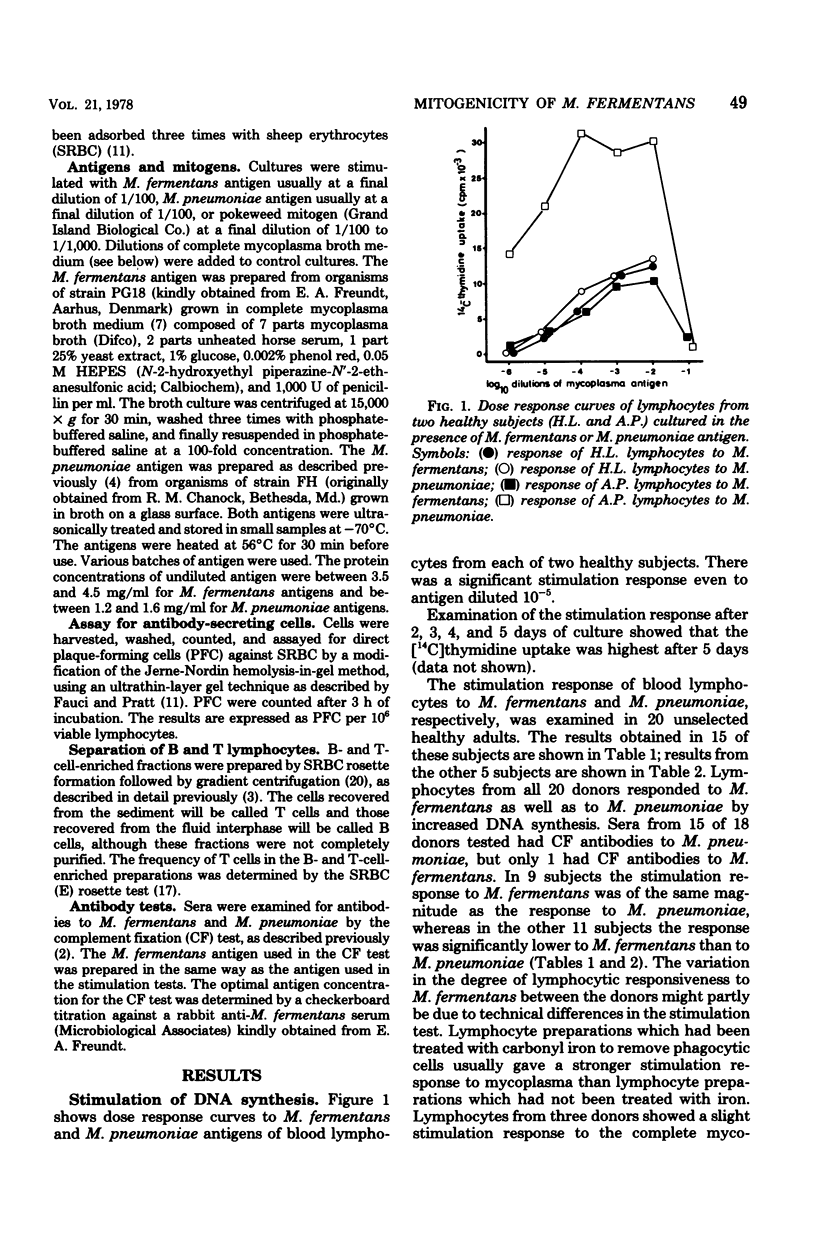
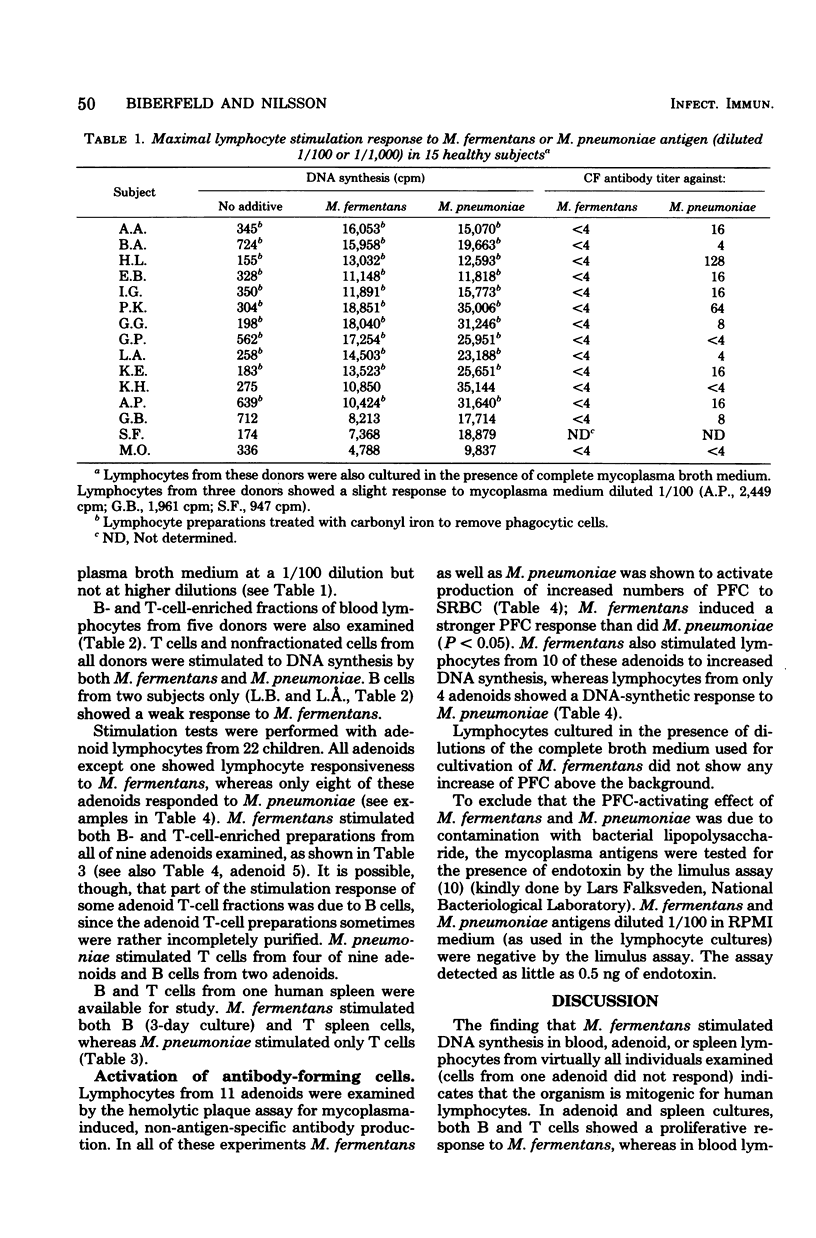
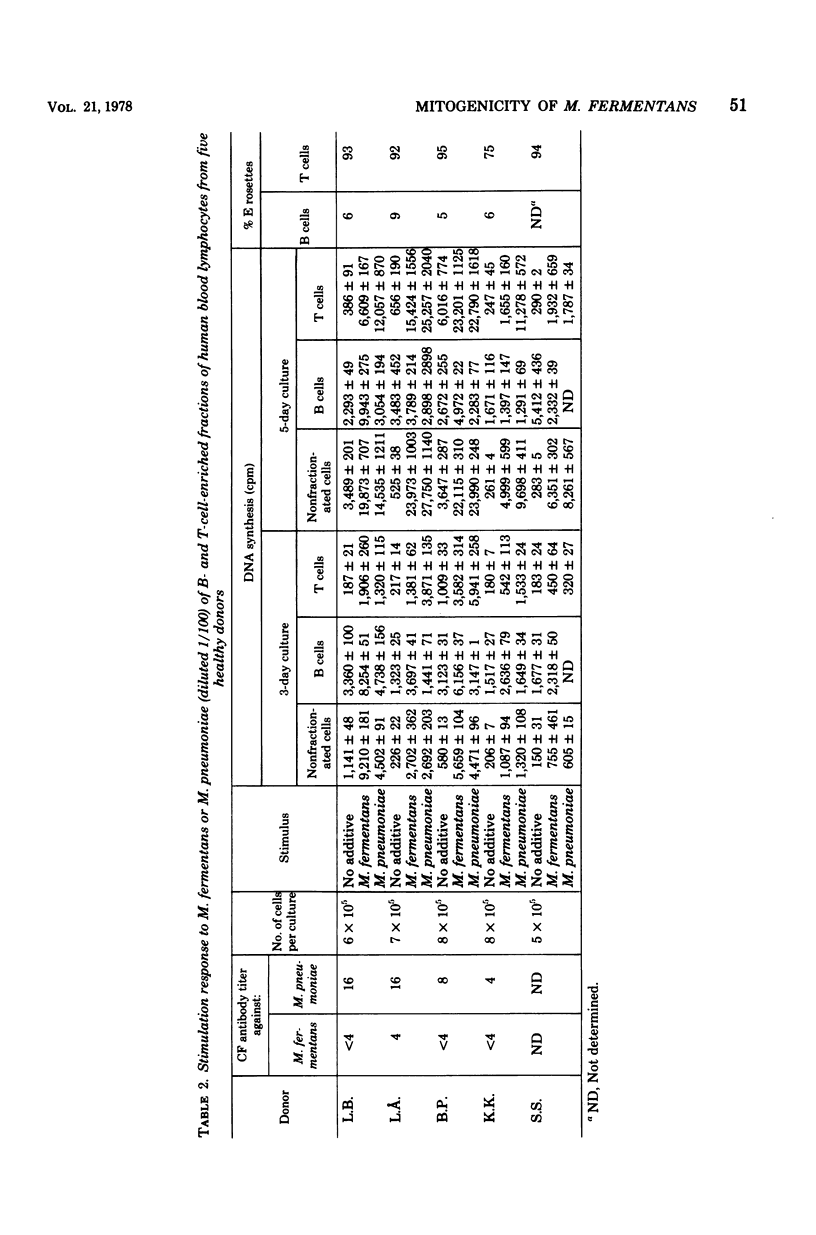
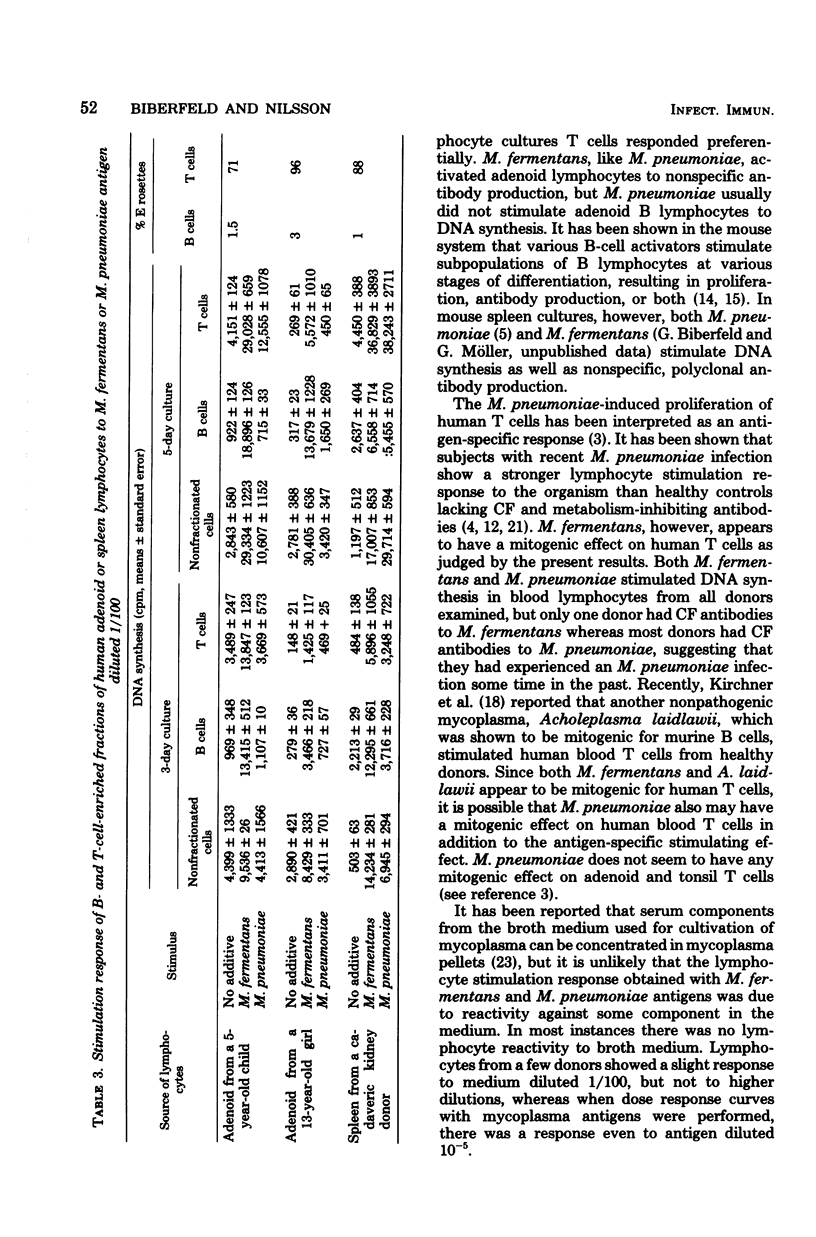
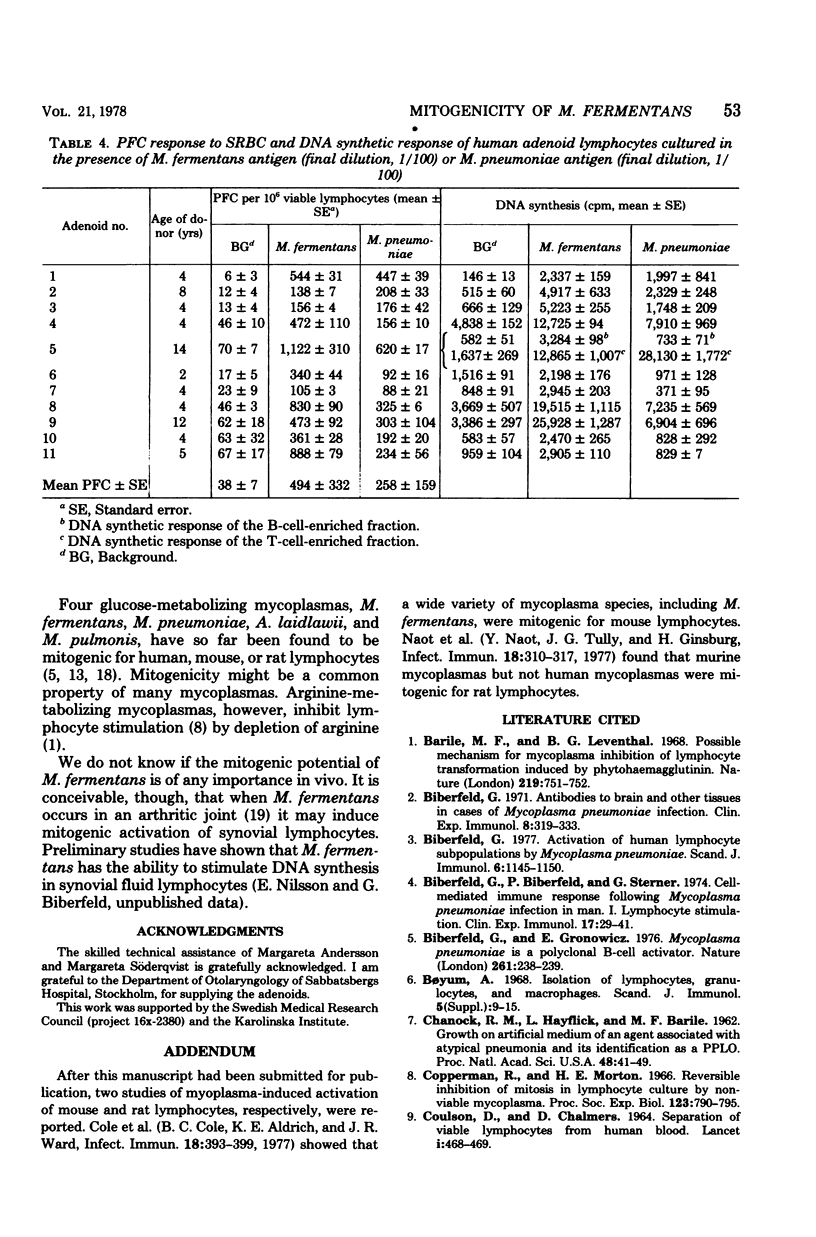
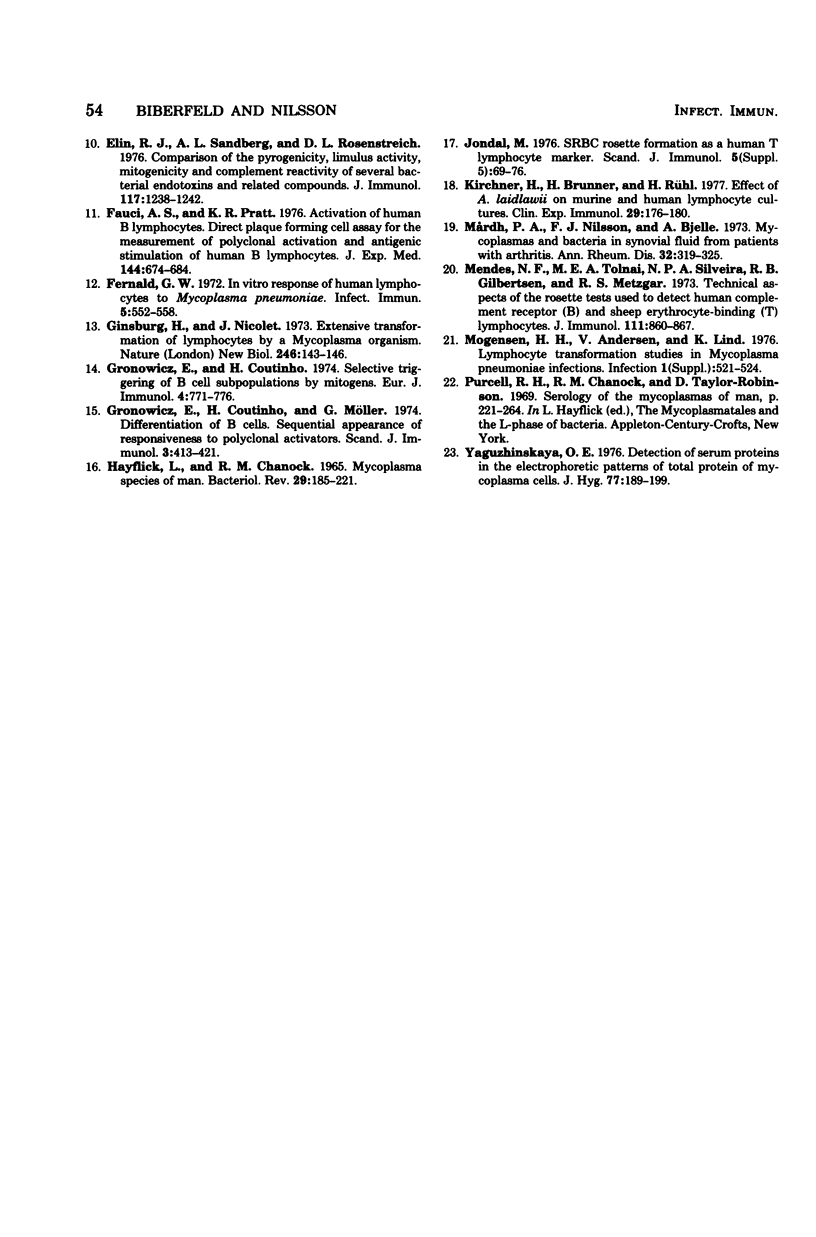
Selected References
These references are in PubMed. This may not be the complete list of references from this article.
- Barile M. F., Leventhal B. G. Possible mechanism for Mycoplasma inhibition of lymphocyte transformation induced by phytohaemagglutinin. Nature. 1968 Aug 17;219(5155):750–752. doi: 10.1038/219751a0. [DOI] [PubMed] [Google Scholar]
- Biberfeld G. Activation of human lymphocyte subpopulations by Mycoplasma pneumoniae. Scand J Immunol. 1977;6(11):1145–1150. doi: 10.1111/j.1365-3083.1977.tb00353.x. [DOI] [PubMed] [Google Scholar]
- Biberfeld G. Antibodies to brain and other tissues in cases of Mycoplasma pneumoniae infection. Clin Exp Immunol. 1971 Feb;8(2):319–333. [PMC free article] [PubMed] [Google Scholar]
- Biberfeld G., Biberfeld P., Sterner G. Cell-mediated immune response following Mycoplasma pneumoniae infection in man. I. Lymphocyte stimulation. Clin Exp Immunol. 1974 May;17(1):29–41. [PMC free article] [PubMed] [Google Scholar]
- Biberfeld G., Gronowicz E. Mycoplasma pneumoniae is a polyclonal B-cell activator. Nature. 1976 May 20;261(5557):238–239. doi: 10.1038/261238a0. [DOI] [PubMed] [Google Scholar]
- CHANOCK R. M., HAYFLICK L., BARILE M. F. Growth on artificial medium of an agent associated with atypical pneumonia and its identification as a PPLO. Proc Natl Acad Sci U S A. 1962 Jan 15;48:41–49. doi: 10.1073/pnas.48.1.41. [DOI] [PMC free article] [PubMed] [Google Scholar]
- COULSON A. S., CHALMERS D. G. SEPARATION OF VIABLE LYMPHOCYTES FROM HUMAN BLOOD. Lancet. 1964 Feb 29;1(7331):468–469. doi: 10.1016/s0140-6736(64)90799-8. [DOI] [PubMed] [Google Scholar]
- Cole B. C., Aldridge K. E., Ward J. R. Mycoplasma-dependent activation of normal lymphocytes: mitogenic potential of mycoplasmas for mouse lymphocytes. Infect Immun. 1977 Nov;18(2):393–399. doi: 10.1128/iai.18.2.393-399.1977. [DOI] [PMC free article] [PubMed] [Google Scholar]
- Copperman R., Morton H. E. Reversible inhibition of mitosis in lymphocyte cultures by non-viable Mycoplasma. Proc Soc Exp Biol Med. 1966 Dec;123(3):790–795. doi: 10.3181/00379727-123-31605. [DOI] [PubMed] [Google Scholar]
- Elin R. J., Sandberg A. L., Rosentreich D. L. Comparison of the pyrogenicity, Limulus activity mitogenicity and complement reactivity of several bacterial endotoxins and related compounds. J Immunol. 1976 Oct;117(4):1238–1242. [PubMed] [Google Scholar]
- Fauci A. S., Pratt K. R. Activation of human B lymphocytes. I. Direct plaque-forming cell assay for the measurement of polyclonal activation and antigenic stimulation of human B lymphocytes. J Exp Med. 1976 Sep 1;144(3):674–684. doi: 10.1084/jem.144.3.674. [DOI] [PMC free article] [PubMed] [Google Scholar]
- Fernald G. W. In vitro response of human lymphocytes to Mycoplasma pneumoniae. Infect Immun. 1972 Apr;5(4):552–558. doi: 10.1128/iai.5.4.552-558.1972. [DOI] [PMC free article] [PubMed] [Google Scholar]
- Ginsburg H., Nicolet J. Extensive transformation of lymphocytes by a mycoplasma organism. Nat New Biol. 1973 Dec 5;246(153):143–146. doi: 10.1038/newbio246143a0. [DOI] [PubMed] [Google Scholar]
- Gronowicz E., Coutinho A., Möller G. Differentiation of B cells: sequential appearance of responsiveness to polyclonal activators. Scand J Immunol. 1974;3(4):413–421. doi: 10.1111/j.1365-3083.1974.tb01274.x. [DOI] [PubMed] [Google Scholar]
- Gronowicz E., Coutinho A. Selective triggering of B cell subpopulations by mitogens. Eur J Immunol. 1974 Nov;4(11):771–776. doi: 10.1002/eji.1830041113. [DOI] [PubMed] [Google Scholar]
- HAYFLICK L., CHANOCK R. M. MYCOPLASMA SPECIES OF MAN. Bacteriol Rev. 1965 Jun;29:185–221. doi: 10.1128/br.29.2.185-221.1965. [DOI] [PMC free article] [PubMed] [Google Scholar]
- Jondal M. SRBC rosette formation as a human T lymphocyte marker. Scand J Immunol. 1976 Jun;Suppl 5:69–76. doi: 10.1111/j.1365-3083.1976.tb03857.x. [DOI] [PubMed] [Google Scholar]
- Kirchner H., Brunner H., Rühl H. Effect of A. laidlawii on murine and human lymphocyte cultures. Clin Exp Immunol. 1977 Jul;29(1):176–180. [PMC free article] [PubMed] [Google Scholar]
- Mendes N. F., Tolnai M. E., Silveira N. P., Gilbertsen R. B., Metzgar R. S. Technical aspects of the rosette tests used to detect human complement receptor (B) and sheep erythrocyte-binding (T) lymphocytes. J Immunol. 1973 Sep;111(3):860–867. [PubMed] [Google Scholar]
- Mårdh P. A., Nilsson F. J., Bjelle A. Mycoplasmas and bacteria in synovial fluid from patients with arthritis. Ann Rheum Dis. 1973 Jul;32(4):319–325. doi: 10.1136/ard.32.4.319. [DOI] [PMC free article] [PubMed] [Google Scholar]
- Naot Y., Tully J. G., Ginsburg H. Lymphocyte activation by various Mycoplasma strains and species. Infect Immun. 1977 Nov;18(2):310–317. doi: 10.1128/iai.18.2.310-317.1977. [DOI] [PMC free article] [PubMed] [Google Scholar]
- Yaguzhinskaya O. E. Detection of serum proteins in the electrophoretic patterns of total proteins of mycoplasma cells. J Hyg (Lond) 1976 Oct;77(2):189–198. doi: 10.1017/s002217240002461x. [DOI] [PMC free article] [PubMed] [Google Scholar]


